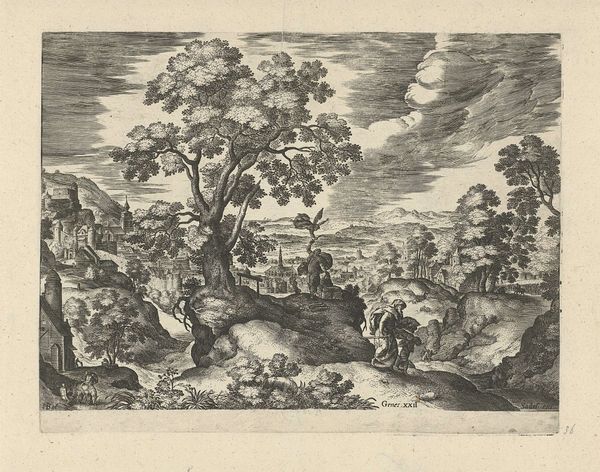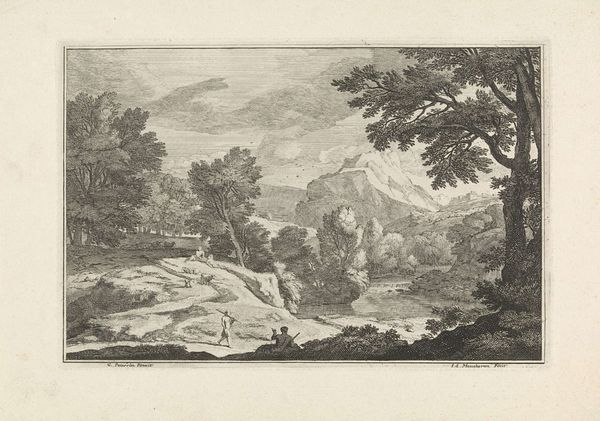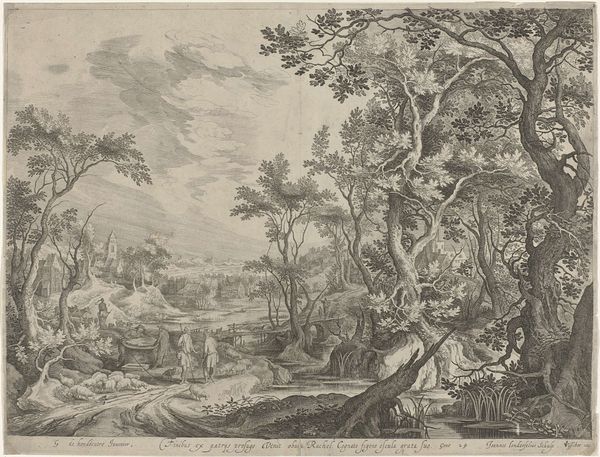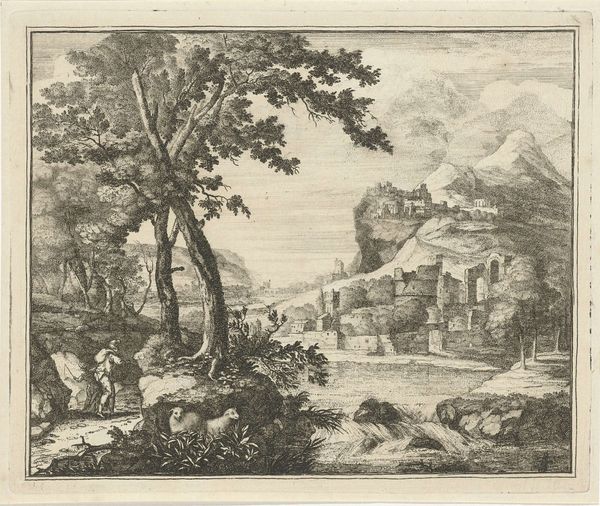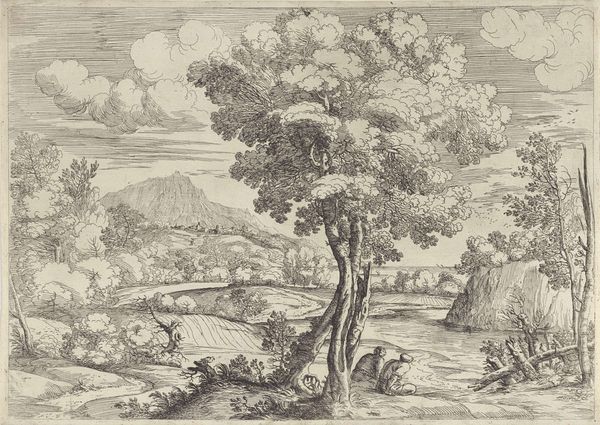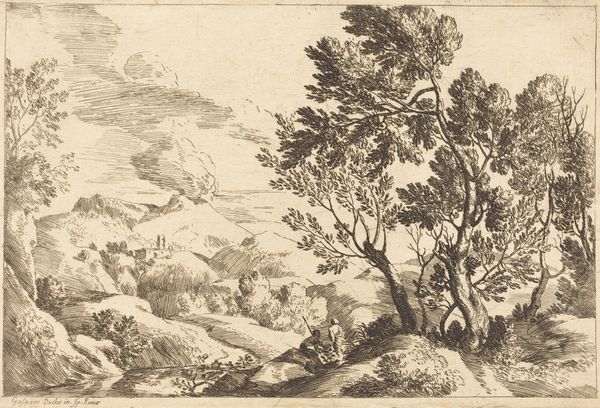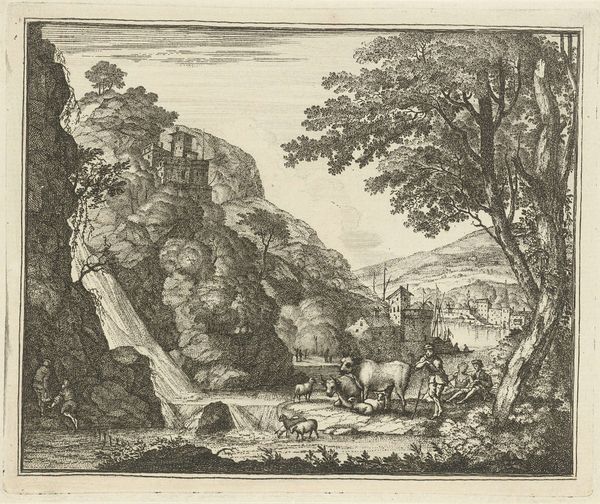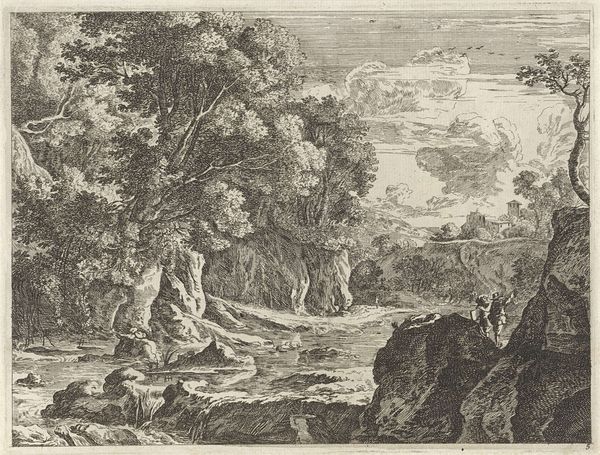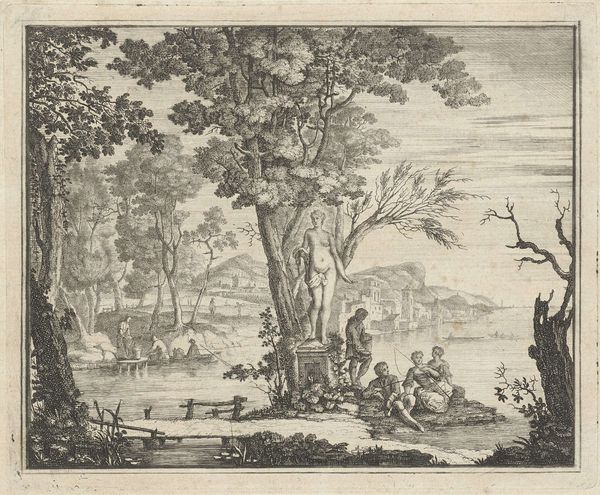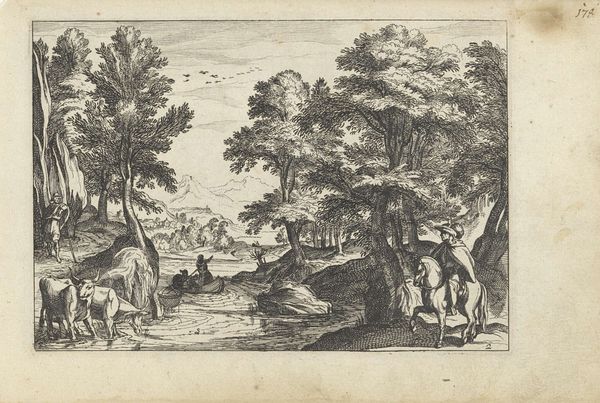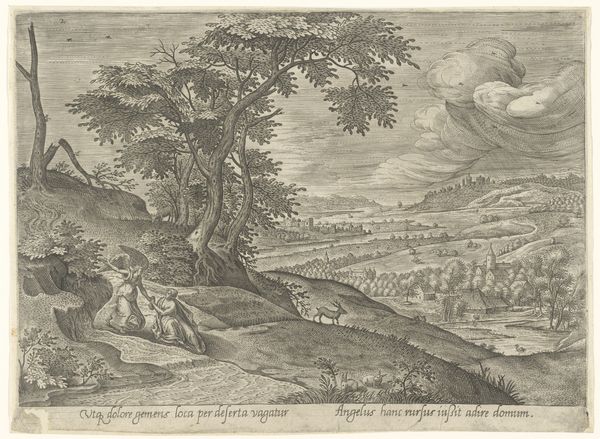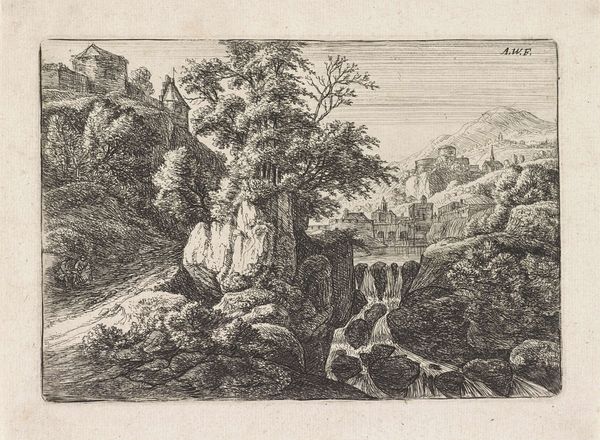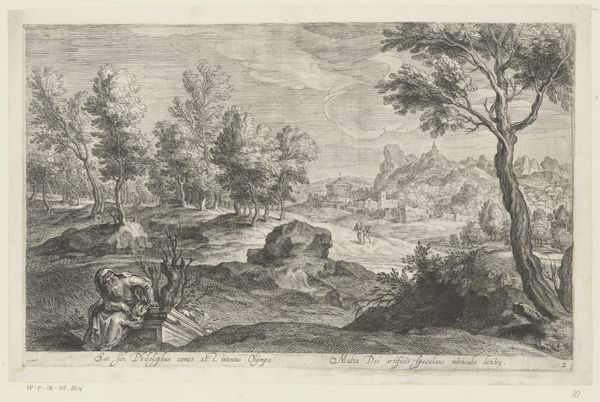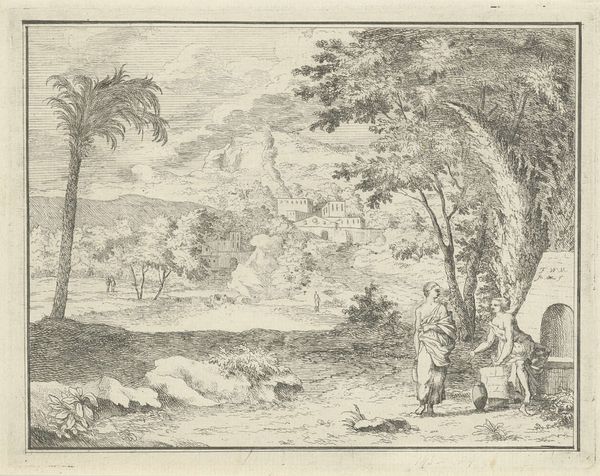
print, engraving
# print
#
landscape
#
mannerism
#
form
#
line
#
northern-renaissance
#
engraving
Dimensions: height 207 mm, width 271 mm
Copyright: Rijks Museum: Open Domain
Editor: We're looking at "Landscape with the Good Samaritan," a print made sometime between 1580 and 1600 by Johann Sadeler I, currently housed in the Rijksmuseum. The scene is incredibly detailed, almost teeming with life despite its small scale. What can you tell me about it? Curator: This print reflects the complex relationship between art, religion, and social responsibility in the late 16th century. Landscapes weren't just pretty backdrops, but stages upon which moral dramas played out, teaching viewers about ethical conduct and spiritual ideals. Consider the role of the Rijksmuseum. Does displaying the print contribute to education about period ideals? Editor: I guess it would highlight the relationship between people and nature at the time, not to mention how to care for others. I do find the sheer detail kind of overwhelming, though. How did this image reach the masses, and why does it depict a parable instead of the news of the day? Curator: Engravings like this were reproducible, circulated widely and thus had great public appeal. The Parable of the Good Samaritan, found in the Gospel of Luke, offers clear moral instruction: compassion transcends social and religious boundaries. In a period marked by religious conflicts, it might have been used to advocate for tolerance. Can you make out where the parable action is actually occurring? Editor: Oh, it’s in the lower left corner. It is easy to miss within the dense landscape! The figures are tiny in comparison to the rest. So, by setting this religious story within this elaborate landscape, Sadeler normalizes and grounds morality within the natural world and suggests that Christian love ought to penetrate everyday life, right? Curator: Precisely. It also speaks to the powerful influence of humanist ideals during the Northern Renaissance. Editor: I see. So, by analyzing its historical context and cultural symbolism, we get a richer understanding. Thank you for the insight. Curator: My pleasure. Analyzing its reproduction provides great details about accessibility, and how artwork engages public values.
Comments
No comments
Be the first to comment and join the conversation on the ultimate creative platform.
